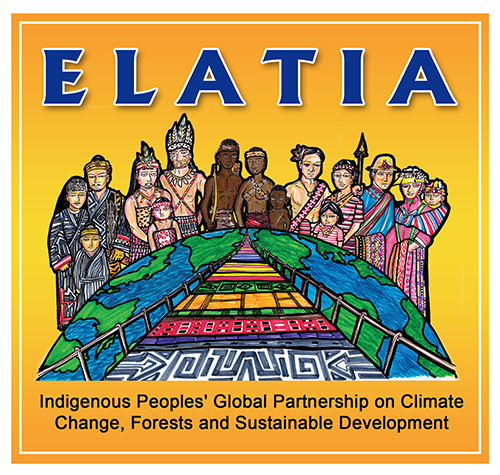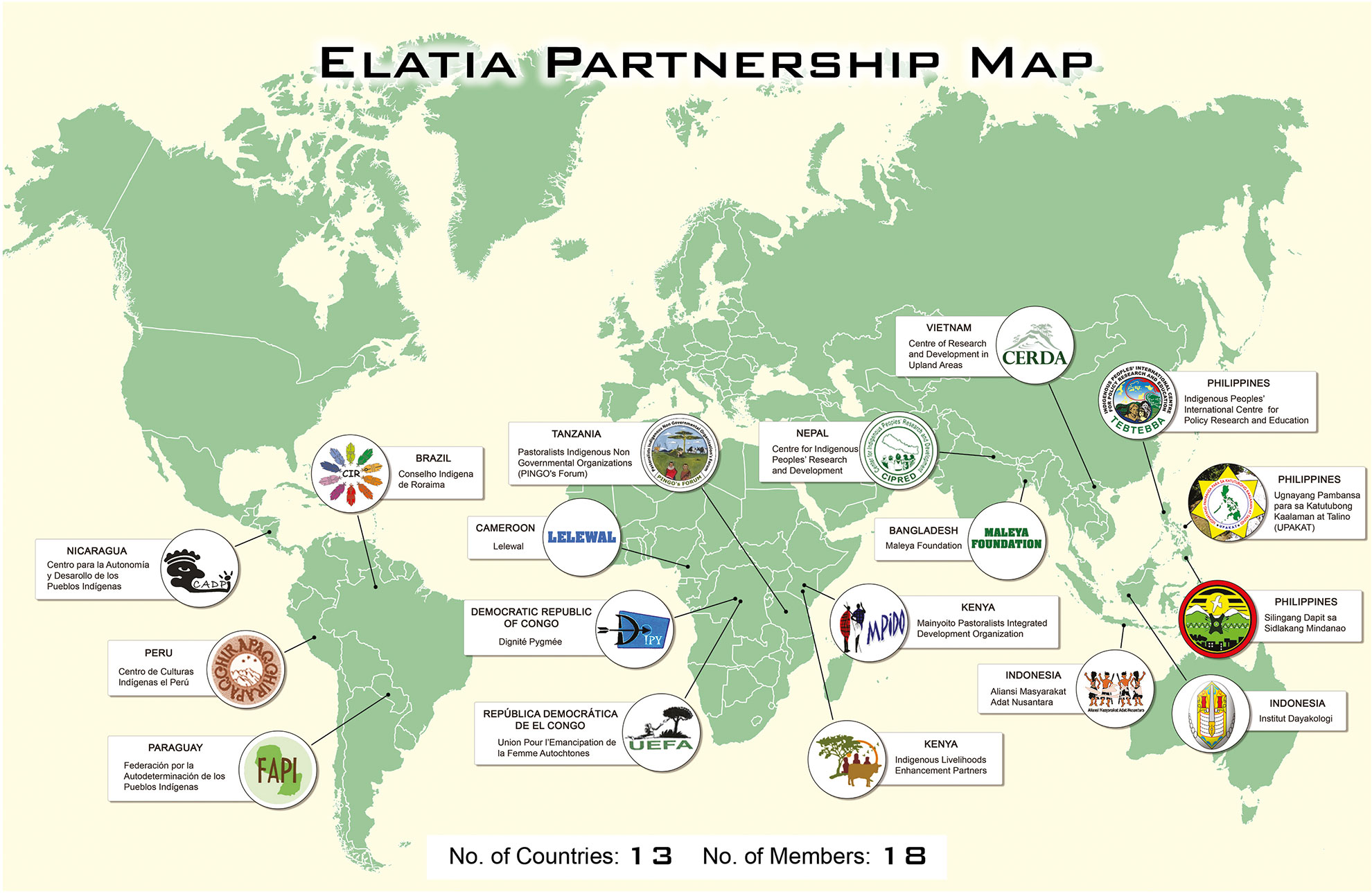ELATIA (Indigenous Peoples' Global Partnership on Climate Change, Forests and Sustainable Development)
is the most vibrant global indigenous network implementing indigenous peoples' sustainable, self-determined development (IPSSDD), including recognition and protection of indigenous peoples' rights and rights to lands, territories and resources; empowering indigenous women and youth;strengthening indigenous governance systems and traditional knowledge; supporting low-carbon sustainable livelihoods; implementing community-based monitoring and information systems (CBMIS), participatory mapping and resource inventory.
ELATIA, formed in 2009 through the leadership of Tebtebba, is currently composed of 19 indigenous peoples' organizations, networks and NGOs in 13 countries: Tebtebba; Aliansi Masyarakat Adat Nusantara (AMAN) and Institut Dayakologi (ID) - Indonesia; Maleya Foundation – Bangladesh; Silingang Dapit sa Sidlakang Mindanao (SILDAP) and Ugnayang Pambansa para sa Katutubong Kaalaman at Talino (UPAKAT) - Philippines; Center for Indigenous Peoples' Research and Development (CIPRED) - Nepal; Centre for Research and Development in Upland Areas (CERDA) - Viet Nam; Lelewal – Cameroon; Mainyoito Pastoralist Integrated Development Organisation (MPIDO) and Indigenous Livelihoods Enhancement Partners (ILEPA) – Kenya; Pastoralists Indigenous Non Governmental Organizations (PINGO's Forum) - Tanzania; Servicios del Pueblo Mixe-Asamblea Mixe Para el Desarrollo Sostenible – Mexico; Centro de Culturas Indígenas el Perú (CHIRAPAQ) – Peru; Centro para la Autonomía y Desarollo de los Pueblos Indígenas (CADPI)- Nicaragua; Conselho Indigena de Roraima (CIR) – Brazil; Dignite Pygmee (DIPY) and UEFA - Democratic Republic of Congo; Federación por la Autodeterminación de los Pueblos Indígenas - Paraguay.
ELATIA is an indigenous Maasai term meaning "neighborhood."
Through these organizations and networks we have direct partnerships as well with indigenous communities. These indigenous territories and communities are the following:
- Tanjung and Pendaun Villages in West Kalimantan, Indonesia – indigenous peoples are Dayak
- Dura community in Lamjung District in Nepal – indigenous peoples are Dura
- Thai Nguyen and Thanh Hoa provinces, Viet Nam - indigenous peoples are the Thai, Tho, Tay, Nung, Dzao, Cao Lan, San Chi, H’Mong and Kinh
- Tasba Pri Territory and Waspam, Autonomous Region in the Atlantic Coast, Nicaragua – indigenous peoples are Miskito, Mayangna and Afro-descendants
- Chandigarh, Junin Region; Oxapampa, Pasco Region, Puerto Inca, Huanaco Region - indigenous peoples are mainly Yanesha and they belong to FECONAYA (Federation of Native Communities of Yanesha)
- Santiago, Malacatepec and San Cristobal, Chichicaxtepec, Mixe Region, State of Oaxaca, México – indigenous peoples are Mixe
- Kajiado, Nakuru and Narok counties, southern Kenya – indigenous peoples are Maasai
- Jacamim, Malacachete, Manoa-Pium in Serra da Lua Ethno-Region in the State of Roraima, Brazil – indigenous peoples are Wapichana
- Ikita and Loile Villages, Inongo territory, Province of Bandundu in Democratic Republic of Congo – indigenous peoples are pygmies
- Mbalmayo, Central Province and Djoum, South Province, Cameroon – indigenous peoples are the Mbororo and Baka
- Cordilleras - Binablayan, Wangwang, Tukukan, Ahin, Tulludan barangays (villages) in Tinoc municipality, Ifugao; Pidlisan, Mt. Province; Pasil in Kalinga; and Manipungol and Mapaang barangays, Maco municipality, Compostela Valley in the Philippines – indigenous peoples are Kalanguya, Kankana-ey, Guinaang, and Mansaka, respectively



